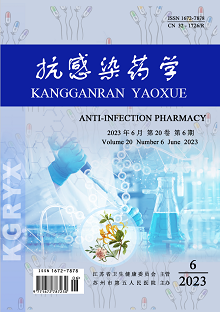GUI Lai, ZHANG Gui-fen, WANG Jian, ZHU Ai-guo
Objective: To analyze the epidemiological characteristics of new and serious adverse drug reactions (ADRs) in clinical patients in the hospital, so as to provide reference for patients' safe and rational drug use in the future. Methods: 696 ADR reports of Changshu No. 1 People's Hospital reported to National Center for ADR Monitoring, China from January 2021 to July 2022 were selected, and information such as patient gender, age, diseases, and organs (or systems) involved in ADRs, clinical manifestations, type of drugs involved, method of administration was collected to analyze the epidemiological characteristics of new and serious ADRs. Results: Among 696 ADR reports, there were 308 new and serious ADRs, of which 214 were new and general, 23 were new and serious, and 71 were serious; among 308 new and serious ADR reports, the top three reporting departments were Department of Critical Care Medicine (19 cases, 6.17%), Department of Neurology (17 cases, 5.52%), and Department of Orthopedics (17 cases, 5.52%). The patients involved were mainly 60 to less than 80 years old (157 cases, 50.97%) and 40 to less than 60 years old (78 cases, 25.32%), and the top three diseases they suffered from were gastric malignant tumors (21 cases, 6.82%), lung infections (19 cases, 6.17%) and bone fractures (18 cases, 5.84%); 308 new and serious ADR reports mainly involved anti-infective drugs (70 cases, 22.73% ), blood system drugs (35 cases, 11.36%) and cardiovascular system drugs (26 cases, 8.44%). The varieties of drugs involved were mainly tranexamic acid (14 cases, 4.55%) and levofloxacin (12 cases, 3.90%); the main organs (or systems) involved were skin and its appendages (114 cases), gastrointestinal and hepatobiliary system (90 cases), and systemic reaction (74 cases). Clinical manifestations that occurred more frequently included rash itching (47 cases), rash (38 cases), nausea (23 cases), chest tightness (20 cases), dizziness (19 cases). 308 patients with new and severe ADRs were treated, 220 cases (71.43%) were cured and 85 cases (27.60%) were improved. Conclusion: ADRs will inevitably occur in patients in the hospital during the medication process, and new or serious ADRs are more likely to occur. Among them, middle-aged and elderly people are most likely to have ADRs. Hospitals should supervise the clinical safety of medication and make unremitting efforts to ensure safe medication for patients.
